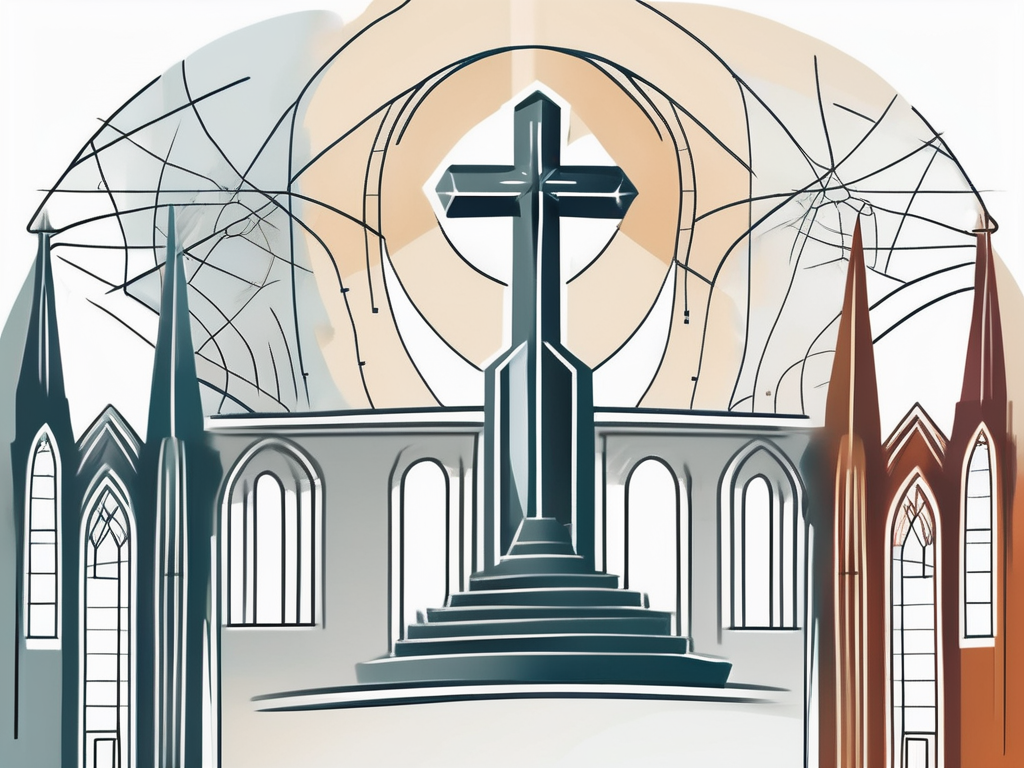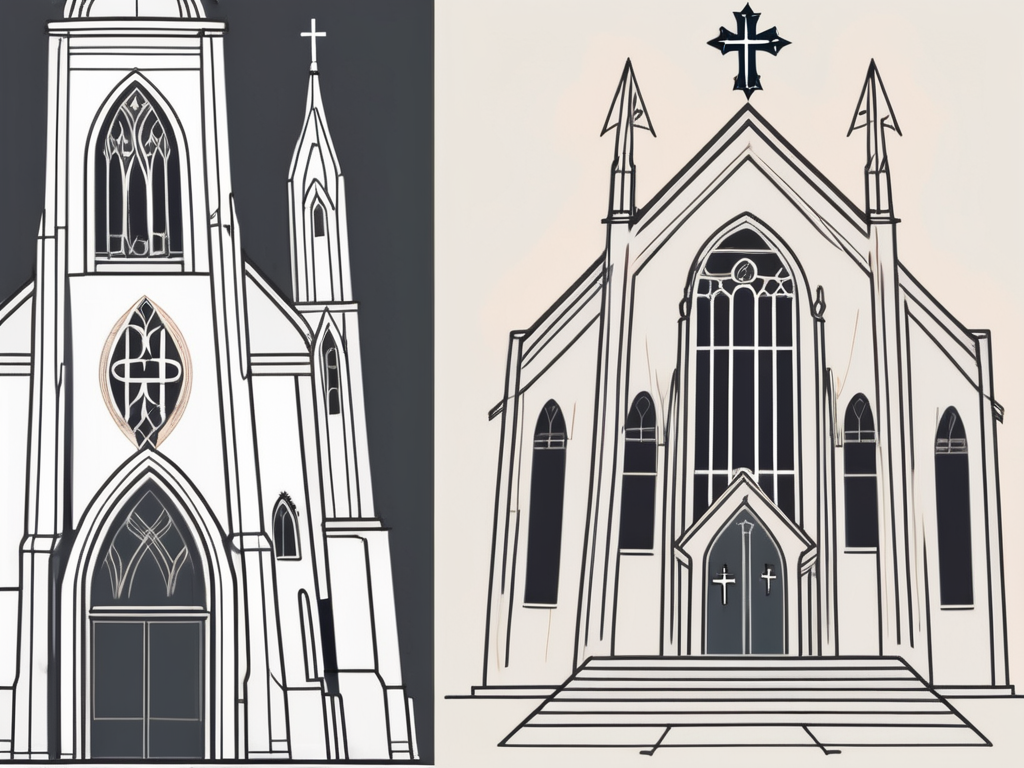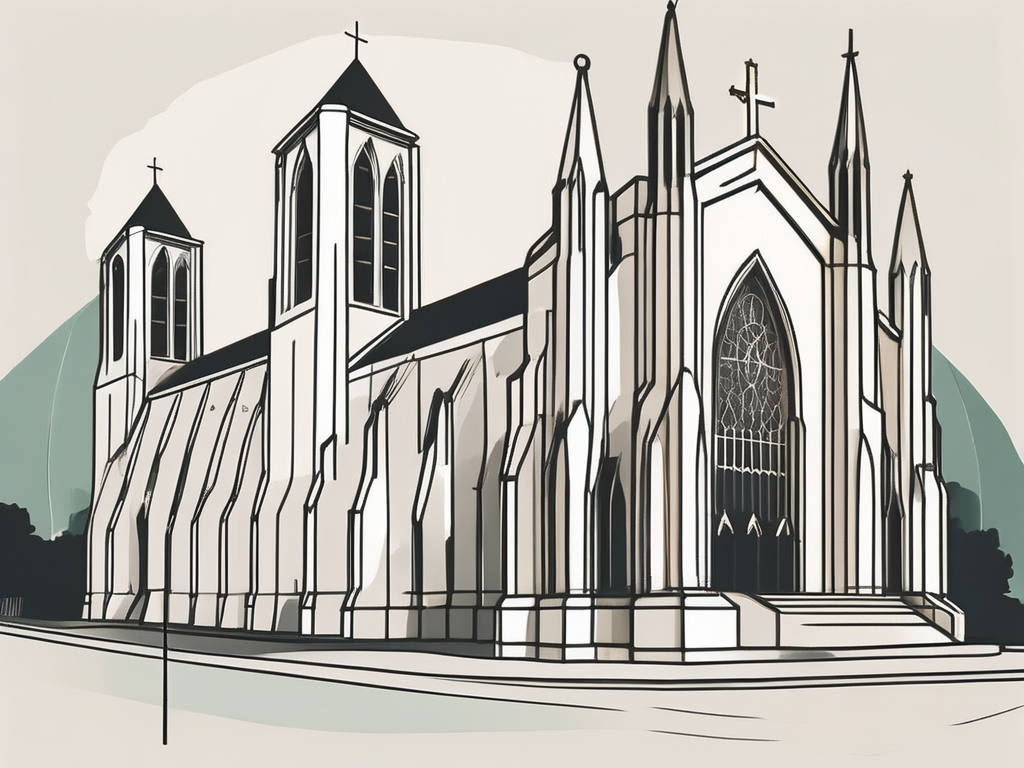In the vast and diverse world of Christianity, there are numerous denominations that have shaped history and influenced society. Two significant branches within the Protestant tradition are Methodism and Anglicanism. Understanding the origins, key beliefs, structure, worship styles, and social/cultural impact of these two denominations allows us to appreciate their similarities and differences. Let’s embark on a journey of exploration and delve into this comparative analysis!
Understanding the Origins of Methodism and Anglicanism
Before we dive into the distinct features of these denominations, it’s important to grasp their historical roots.
The Birth of Methodism
Methodism emerged in the 18th century as a result of the spiritual revival movement led by the brothers John and Charles Wesley. Their emphasis on personal faith experiences, along with a commitment to social justice and evangelism, paved the way for the Methodist movement to spread rapidly across England and eventually beyond its borders.
The Wesley brothers, born in the early 18th century, were raised in a devout Anglican household. However, their spiritual journeys took them on a path that would eventually lead to the birth of Methodism. John Wesley, in particular, experienced a transformative moment in his life known as the Aldersgate experience. It was during a small group meeting in Aldersgate Street, London, that Wesley felt his heart “strangely warmed” and experienced a profound assurance of God’s love and forgiveness. This moment became a defining event in his life and marked the beginning of his mission to spread the message of personal salvation through faith in Christ.
The Methodist movement gained momentum as John Wesley traveled extensively throughout England, preaching in open fields, marketplaces, and even coal mines. His itinerant preaching style, combined with his ability to connect with people from all walks of life, attracted a large following. The Methodist societies, organized into classes and bands, provided a sense of community and accountability for its members, fostering spiritual growth and discipleship.
Methodism also placed a strong emphasis on social justice. John Wesley, influenced by his belief in the inherent worth and dignity of every individual, advocated for the rights of the poor, prisoners, and marginalized groups. He believed that true faith should be accompanied by acts of mercy and compassion, leading Methodists to actively engage in charitable works and social reforms.
The Formation of the Anglican Church
The roots of Anglicanism can be traced back to the 16th century Reformation when King Henry VIII split from the Roman Catholic Church. This break led to the establishment of the Church of England, which later evolved into the Anglican Communion, a global fellowship of churches adopting similar beliefs and practices.
King Henry VIII’s decision to separate from the Roman Catholic Church was primarily driven by political and personal motivations. His desire for an annulment of his marriage to Catherine of Aragon, in order to marry Anne Boleyn, was denied by the Pope. Frustrated by this rejection, Henry VIII sought to assert his authority over the church within his realm, leading to the Act of Supremacy in 1534, which declared the English monarch as the supreme head of the Church of England.
The English Reformation, as it came to be known, brought about significant changes in the religious landscape of England. While the break from Rome was initially driven by political considerations, it also opened the door for theological reforms. Influenced by Protestant ideas circulating on the continent, the Church of England underwent a process of reform and redefinition.
During the reign of Elizabeth I, the Church of England solidified its identity as a via media, or middle way, between Roman Catholicism and Protestantism. The Elizabethan Settlement of 1559 sought to strike a balance between the traditional Catholic rituals and the Protestant principles of Scripture, preaching, and justification by faith alone. This settlement, along with subsequent revisions and developments, shaped the distinct character of Anglicanism.
Over the centuries, Anglicanism spread beyond England and became a global communion of churches. Each province within the Anglican Communion has its own unique history and cultural context, resulting in diverse expressions of Anglican worship and theology. Despite these differences, Anglicans around the world are united by a common heritage and a commitment to the authority of Scripture, the sacraments, and the historic creeds of the Christian faith.
Key Beliefs and Practices
Now that we have a glimpse into their origins, let’s explore some of the core beliefs and practices that differentiate Methodism and Anglicanism.
Methodism and Anglicanism are two distinct Christian denominations with their own unique set of beliefs and practices. While they share some similarities, such as a belief in the divinity of Jesus Christ and the importance of the Bible, there are also significant differences that set them apart.
Core Beliefs of Methodists
Methodism places a strong emphasis on personal piety and the importance of a genuine relationship with God through faith in Jesus Christ. Methodists believe in salvation by grace through faith and the power of the Holy Spirit to transform lives.
Methodists also believe in the concept of sanctification, which is the process of becoming more like Christ through the work of the Holy Spirit. This involves a lifelong journey of spiritual growth and the pursuit of holiness.
Additionally, social justice is deeply ingrained in Methodist theology. The commitment to helping the marginalized and advocating for societal change is a key aspect of Methodism’s ethos. Methodists believe in the inherent worth and dignity of every individual, and they strive to create a more just and equitable society.
Fundamental Anglican Doctrines
Anglicanism, on the other hand, is characterized by its adherence to traditional Christian doctrines and its middle ground approach between Protestantism and Catholicism. Anglicans believe in the importance of maintaining a balance between scripture, tradition, and reason.
Anglicans affirm the importance of scripture, tradition, and reason in interpreting religious teachings. They believe that the Bible is the inspired word of God and the ultimate authority in matters of faith and practice. However, they also recognize the value of tradition and the wisdom of the church fathers in guiding their understanding of the Christian faith.
Anglicans embrace sacraments, including baptism and Holy Communion (also known as the Eucharist), highlighting their significance in worship and spiritual growth. These sacraments are seen as outward signs of God’s grace and are considered essential for the spiritual nourishment of the believer.
Furthermore, Anglicans value the importance of liturgy and worship. The Book of Common Prayer, which contains a collection of prayers and liturgical texts, is central to Anglican worship. It provides a sense of unity and continuity across Anglican churches worldwide.
In conclusion, while Methodism and Anglicanism share some common beliefs, such as the divinity of Jesus Christ, they also have distinct differences in their theological emphases and practices. Methodism places a strong emphasis on personal piety and social justice, while Anglicanism emphasizes the importance of maintaining a balance between scripture, tradition, and reason, and values the sacraments and liturgical worship. These beliefs and practices shape the identity and mission of each denomination, guiding their members in their spiritual journey and their engagement with the world around them.
Structure and Governance
As we delve further into this comparative analysis, examining the structures and governance of Methodism and Anglicanism unveils intriguing differences.
Methodism and Anglicanism, two prominent Christian denominations, have distinct structures and governance systems that shape their operations and decision-making processes. Understanding these differences provides valuable insights into the unique characteristics of each tradition.
The Hierarchical Structure of the Anglican Church
The Anglican Communion operates within an episcopal structure, meaning that bishops hold authority over local congregations. This hierarchical system traces its roots back to the early Christian church, where bishops were seen as successors of the apostles. The Archbishop of Canterbury, as the spiritual leader of the Church of England, holds a significant role in the worldwide Anglican Communion.
Within this hierarchical structure, bishops are responsible for overseeing the spiritual and administrative affairs of their respective dioceses. They provide guidance and pastoral care to the clergy and laity, ensuring that the teachings of the church are upheld. The authority of the bishops extends to matters of doctrine, liturgy, and the overall direction of the Anglican Communion.
Furthermore, the Anglican Church emphasizes the importance of unity and communion among its members. The role of the Archbishop of Canterbury, as the symbolic head of the Anglican Communion, is to foster and maintain this unity by facilitating dialogue and collaboration among bishops from different regions.
The Organizational Structure of Methodism
In contrast, Methodism follows a connectional structure where local churches are grouped together into districts, and districts form conferences. This structure, developed by John Wesley in the 18th century, reflects the Methodist emphasis on community and shared decision-making.
At the local level, Methodist churches are organized into districts, which are geographical areas overseen by a district superintendent. These superintendents provide spiritual guidance, support, and supervision to the pastors and congregations within their districts. The district superintendent acts as a bridge between the local churches and the wider Methodist connection.
Conferences, the next level of organization, bring together multiple districts and serve as forums for discussing matters of theology, polity, and mission. They provide a space for clergy and laity to engage in dialogue, make decisions, and establish policies that shape the direction of the Methodist Church.
Methodism’s connectional structure fosters a sense of community and interdependence among its members. It encourages collaboration and mutual support, allowing for a collective discernment of God’s will for the church. This structure also enables the Methodist Church to adapt and respond to the changing needs and challenges of its congregations and communities.
In conclusion, the hierarchical structure of the Anglican Church and the connectional structure of Methodism offer distinct approaches to governance and decision-making. While Anglicanism emphasizes the authority of bishops and the role of the Archbishop of Canterbury in maintaining unity, Methodism values community, shared decision-making, and adaptability. Understanding these structures provides valuable insights into the organizational dynamics of these two influential Christian traditions.
Worship Styles and Liturgy
When we step into the realm of worship, we encounter another distinctive contrast between Methodism and Anglicanism. Let’s explore the rich traditions and practices that shape the worship experiences in these two Christian denominations.
The Liturgical Practices of Anglicanism
Anglican worship tends to be more formal and liturgical, often following a prescribed order of service known as the Book of Common Prayer. This book, dating back to the 16th century, provides a comprehensive guide for worship, including prayers, scripture readings, and hymns.
Within the Anglican tradition, the liturgy is carefully crafted to create a sense of reverence and awe. The use of ceremonial robes, incense, and processions adds a visual element to the worship experience, enhancing the overall atmosphere of worship. The congregation actively participates in the liturgy through responsive readings, reciting creeds, and joining in communal prayers.
One of the unique aspects of Anglican worship is the celebration of the Eucharist, also known as Holy Communion or the Lord’s Supper. This sacrament holds a central place in Anglican worship, symbolizing the unity of the church and the ongoing presence of Christ among the believers.
Worship Styles in Methodism
Methodists, while valuing tradition, embrace a more diverse range of worship styles. Some Methodist churches opt for a traditional approach with liturgical elements, while others emphasize contemporary worship, incorporating modern music and multimedia presentations. The freedom to vary worship styles accommodates the preferences of different congregations.
In traditional Methodist worship, hymns play a significant role, with congregational singing accompanied by organ or piano. The liturgy follows a structured format, including prayers, scripture readings, and a sermon that focuses on biblical teachings and its application to daily life. The order of worship may vary slightly from church to church, but the core elements remain consistent.
On the other hand, contemporary Methodist worship embraces a more informal and interactive style. Praise bands, consisting of guitars, drums, and keyboards, lead the congregation in energetic and uplifting worship songs. The use of multimedia technology, such as projectors and screens, allows for visual aids and video presentations to enhance the worship experience.
Regardless of the worship style, Methodists place a strong emphasis on the importance of congregational participation. The congregation is encouraged to actively engage in worship through singing, praying, and responding to the message. This participatory approach creates a sense of community and unity among the worshippers.
As we delve into the world of worship in Methodism and Anglicanism, we discover the beauty and diversity that exists within these two traditions. Whether it’s the reverence and grandeur of Anglican liturgy or the dynamic and interactive nature of Methodist worship, both denominations offer unique and meaningful experiences for their respective congregations.
Social and Cultural Impact
Lastly, let’s examine how Methodism and Anglicanism have made a mark on society and culture.
The Social Influence of Methodism
Methodism played a significant role in the social transformation of England during the Industrial Revolution. Methodist leaders such as John Wesley advocated for improved working conditions and education for the working class. Their emphasis on ministry to the poor and marginalized laid the groundwork for social justice movements that continue today.
The Cultural Impact of Anglicanism
Anglicanism’s historical significance resonates beyond religious circles. It has shaped English literature, music, and art, leaving an indelible mark on cultural expression. From the poetic beauty of Anglican hymns to the architectural grandeur of Anglican cathedrals, the cultural impact of Anglicanism is notably profound.
In conclusion, examining the origins, key beliefs, structure, worship styles, and social/cultural impact reveals the remarkable diversity within the Christian faith. Methodism and Anglicanism differ in many respects, yet both hold a deep commitment to live out their faith in the world. By embracing their unique traditions and engaging in meaningful dialogue, we can appreciate their distinctiveness while fostering unity within the broader Christian community.












